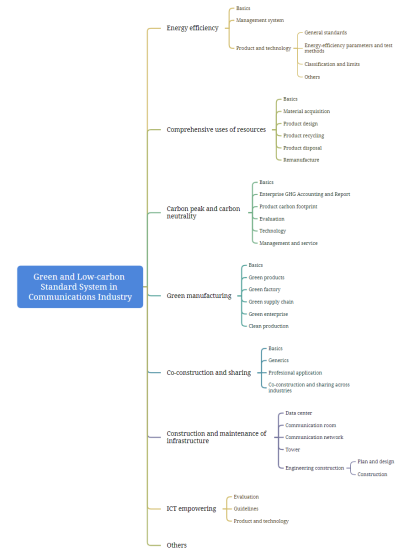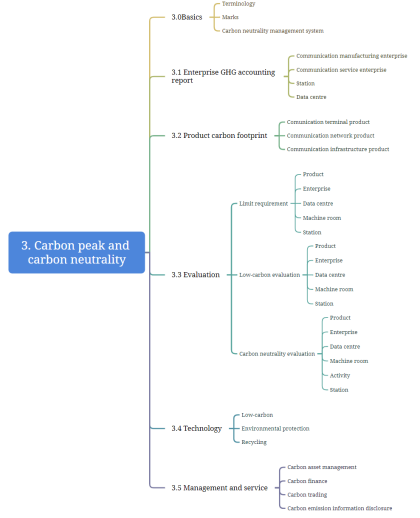On 18 July 2023, China’s Ministry of Industry and Information Technology solicited public opinions on the Guidelines for the Construction of the Green and Low-carbon Standards System in the Communications Industry (Version 2023) (hereinafter referred to as the Guidelines). The period for submitting comments closed on 18 August 2023.
The Guidelines find their basis on the (i) standard system of energy conservation and comprehensive utilization, which was put forward during the 12th Five-year Plan Period (2011-2015); and the (ii) standard system of green manufacturing and carbon peak and neutrality, which was put forward during the 13th Five-year Plan Period (2016-2020), with the aim of providing guidance and direction to standardization in the field. The goal of the Guidelines is to develop, by 2025, over 50 national standards, sector standards, and association standards in the field, thus serving the industry needs for achieving carbon reduction.
The Guidelines consist of five parts: general requirements, rationale for the standard system, structure of the standard system, implementation provisions, and annexes. Specifically, the standard system is a multi-layered structure with eight major aspects: energy efficiency, comprehensive uses of resources, carbon peak and carbon neutrality, green manufacturing, joint construction and sharing, construction and maintenance of infrastructure, ICT empowerment, and others (figure 1). Furthermore, a detailed overview of the third aspects constituting the Guidelines is also provided, namely the standard system of carbon peak and carbon neutrality in the communication industry (figure 2).

Figure 1: Green and Low-carbon Standards System in Communications Industry

Figure 2: Carbon Peak and Carbon Neutrality Standard System in Communications Industry
The Guidelines also list, in the annexes, all the national and sector standards (released or in the development phase) that are identified as key parts of the standard system. In addition, annex 2 explicitly indicates 15 main directions for future standardization work in each field.
As to international cooperation, the following requirements are set in the Guidelines:
- Monitor the latest updatesof green and low-carbon standardization work in the international communications industry;
- Participatein the international standardization work in the field of energy conservation and energy efficiency improvement, environmental protection, carbon peaking and carbon neutrality in the communications industry;
- Promoteresearch on green and low-carbon international standards proposals;
- Promote international mutual recognition of standards;
- Promote the conversion ofdomestic standards to international standards in a timely manner, thus enhancing China’s influence in international standard-setting organizations and its commitment to addressing climate change.




